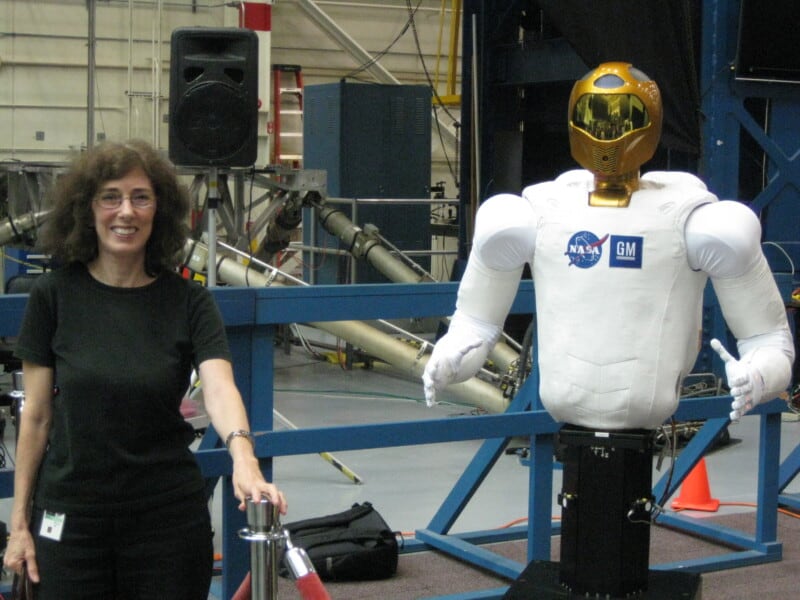
Dorothy Oehler
Senior Scientist
Professional History
Dr. Oehler received her Ph. D. from the Department of Earth, Planetary, and Space Sciences (EPSS) at the University of California at Los Angeles (UCLA), with specializations in Precambrian life, organic microfossils, and isotopic evidence of ancient life. After that, she spent 3 years in Australia working for the Baas Becking Geobiological Laboratory of the Commonwealth Scientific and Industrial Research Organization (CSIRO) as a Research Scientist. There she studied organic matter in Proterozoic microfossils associated with metal-sulfide deposits. Upon returning to the U.S., Dr. Oehler worked for Conoco Inc. for 22 years as a source rock specialist, where she investigated the occurrence of organic matter, oil, and methane in basins all over the world. In that capacity, she worked in three locations for Conoco: Their research center in Ponca City, Oklahoma; their North Sea Exploration office in London, UK; and their International New Ventures Group in Houston, Texas. Her work in Oklahoma involved years of collaboration with Dr. Benjamin Sternberg (now at the University of Arizona) and resulted in a Patent for a method to evaluate near surface electrical anomalies and their relevance to hydrocarbon seepage. In London, she concentrated on maturation of petroleum source rocks (organic-rich sedimentary units) along with downhole log signatures of source rock maturity, and she formulated new insights to gas exsolution during basin inversion. In Houston, she was the Technical Lead of a team evaluating coalbed methane resources worldwide and she headed New Ventures efforts in the Former Soviet Union, Venezuela and Africa. In early 2003, Dr. Oehler was invited to spend three months at the Australian Centre for Astrobiology (ACA), collaborating with long-time colleague, Dr. Malcolm Walter, the founder and then-Director of the ACA. Dr. Walter was interested in further studies of microfossils preserved in Proterozoic shales of the northern Australia, McArthur River Zn-Pb-Ag deposit - one of the best-preserved, sediment-hosted base-metal deposits in the world. That effort was repeated in 2004, when Dr. Oehler returned to the ACA as a Visiting Scientist for continuing collaboration with Dr. Walter on Proterozoic microfossils and their utility as analogues for potential life that might have developed on Mars. In 2003, Dr. Oehler became a consultant to NASA at Johnson Space Centre (JSC). There she spent 16+ years, providing insight into early life forms on Earth, their biosignatures and use as analogs for potential Martian life. She contributed briefly to the NASA Desert Research and Technology Studies (RATS) project, providing guidance on microfossil collection procedures to be tested with various spacesuit designs. She worked with Dr. David McKay on the possibility of microfossils in Martian meteorite ALH84001 and acquired new samples from that meteorite for this work. But her work did not reveal any structures in the new samples that were convincing as microbial remains. She also had extensive collaborations from 2005 to 2012 with Dr. Francois Robert and his team at the at the Muséum National d'Histoire Naturelle in Paris, using the then-relatively-new technique of NanoSIMS to define sub-micron-scale elemental composition of earliest terrestrial life. Numerous Proterozoic and Archean organic constituents were analyzed on the Paris group's NanoSIMS instrument, providing a baseline for remains of ancient life on Earth. In addition, isotopic analyses of Proterozoic and Archean samples were conducted with Dr. Christopher House (The Pennsylvania State University) using the SIMS instrument in the department of EPSS at UCLA. The SIMS results provided additional isotopic information of ancient organic remains on Earth, leading to new insights regarding their biogenicity and suggesting a planktonic habit, autotrophic metabolism, cosmopolitan distribution of at least 400 million years for some of Earth's earliest organisms. At JSC, Dr. Oehler also applied predictive geological methods (based on her years in petroleum exploration) to identify localities on Mars most likely to contain concentrated and well preserved organics. She worked extensively with Dr. Carlton C. Allen (the then-Manager for the Astromaterials Acquisition and Curation Office at JSC) on various Mars landing site evaluations and geological assessments, and it was Dr. Allen who introduced Dr. Oehler to many of the imaging techniques used in planetary exploration. This type of work also involved assessment of indications of methane on Mars. Dr. Oehler had spent years with Conoco studying methane seepage as an indicator of subsurface methane reserves, and it was well known at the time that some of the major methane occurrences on Earth were associated with regions of mud volcanism. Those observations led to work on potential mud volcanoes in Acidalia Planitia, Mars and a 10+ year collaboration with Dr. Giuseppe Etiope, an international expert on terrestrial mud volcanism and methane seepage at the Istituto Nazionale di Geofisica e Vulcanologia in Rome, Italy. In 2011, Dr. Oehler was selected to be a Participating Scientist on the Mars Science Laboratory (MSL) Mission. She continued in that role through 2016, providing geological assessment of results from the Curiosity Rover. In 2016, she was invited to participate in the Methane on Mars workshop, sponsored by the Keck Institute for Space Studies at Caltech. Dr. Oehler's work in planetary science has resulted in a number of co-authored publications (listed below) discussing 1) locations on Mars for methane generation, trapping, and episodic release; 2) evidence for ancient Martian spring deposits, mud volcanoes, and a northern ocean; and 3) biosignatures of terrestrial life forms that may be of future astrobiological significance. In 2012, Dr. Oehler was named the Distinguished Alumna of the year from the Department of Earth, Planetary, and Space Sciences at UCLA. And in late 2016, Dr. Oehler joined the Planetary Science Institute where she continues her work on Mars methane, predictive geology for Mars exploration, and early life studies.


LEFT: With "Robonaut" at Johnson Space Center. ---- RIGHT: With Mock Up of MSL Mission's Curiosity Rover at JPL.
